
32-year-old male with end-stage renal disease (on dialysis) secondary to advanced diabetes, presented with sudden onset pain and decreased vision in the right eye since three days prior. He was found to have hand motions vision and elevated intraocular pressure (~50-60). He denied any trauma or recent eye surgeries. He has a history of proliferative diabetic retinopathy, who was treated with panretinal photocoagulation in both eyes in the past. Hematology and rheumatology were both consulted, but no underlying primary etiology was found.
Hemorrhage in the suprachoroidal space may occur spontaneously (as in this case), intraoperatively, or traumatically. It may also be associated with intraocular vascular anomalies.
Clinically findings include one or more dome-shaped choroidal protrusions. The intraocular pressure is often elevated, and there may be anterior movement of the iris, lens, and/or vitreous body. The red reflex may be blunted, and there may be conjunctival hemorrhage. Breakthrough vitreous hemorrhage is also possible.
Surgery (i.e. drainage only when the blood is liquefied) is sometimes the treatment for kissing choroidal detachments in order to prevent secondary traction or rhegmatogenous retinal detachments. This patient was closely monitored and treated with oral prednisone 80 mg daily. There was gradual resolution of the hemorrhage over the following two months; however, his vision remains poor (LP).
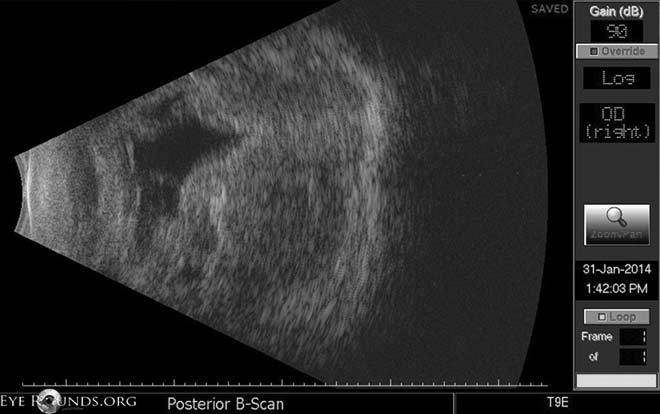
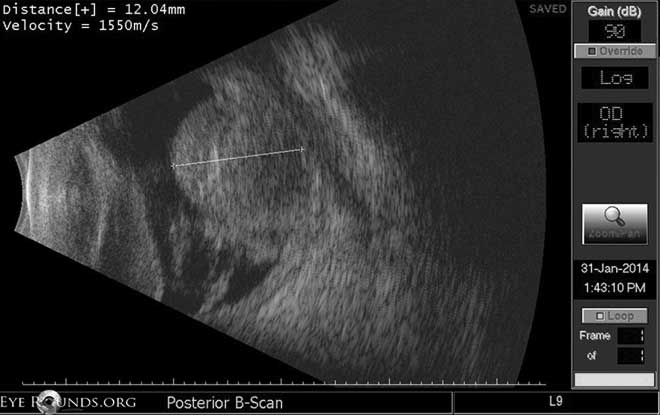
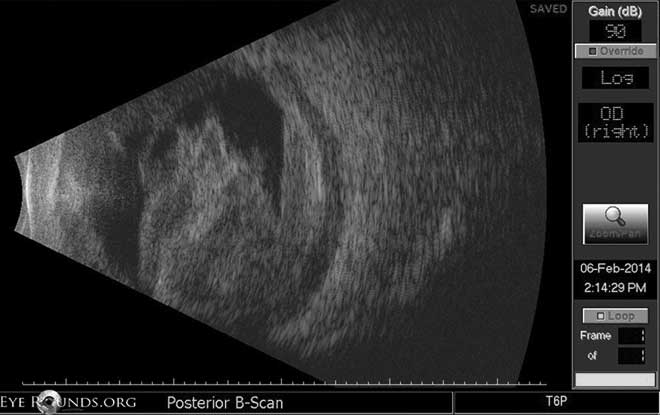
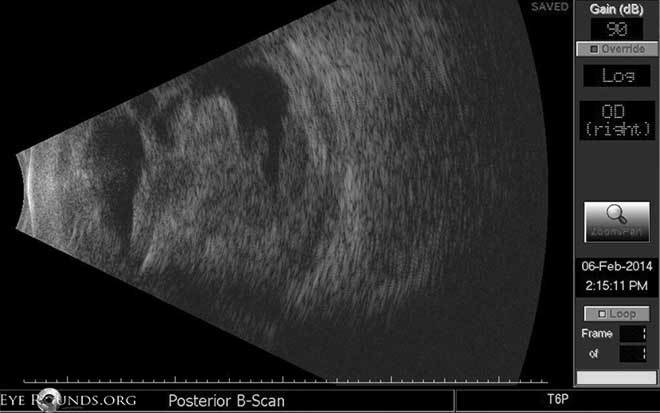
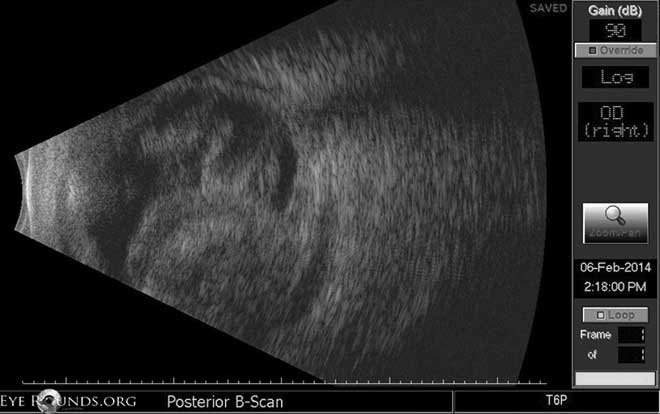
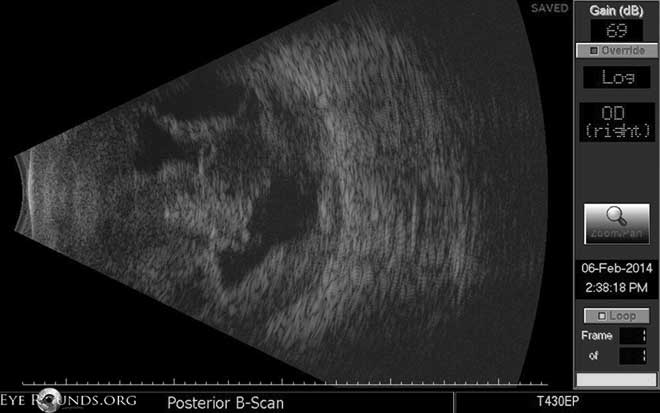
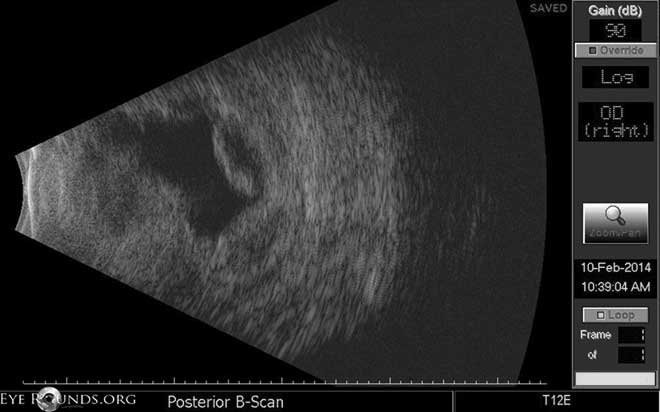
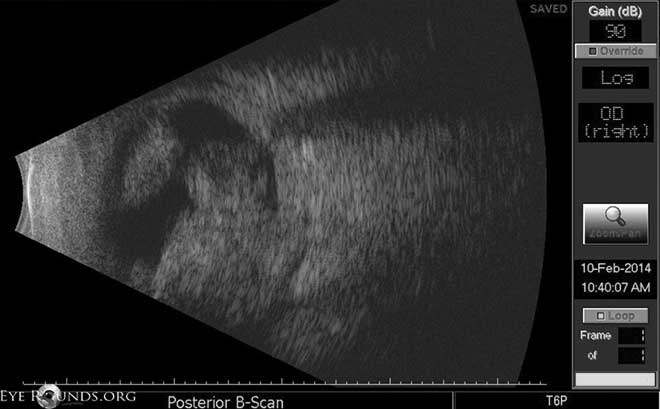
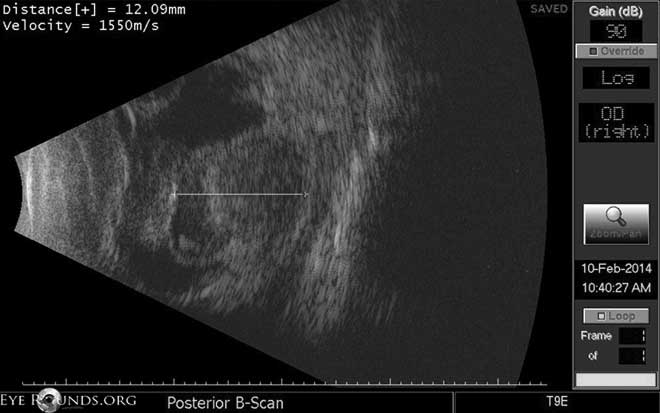
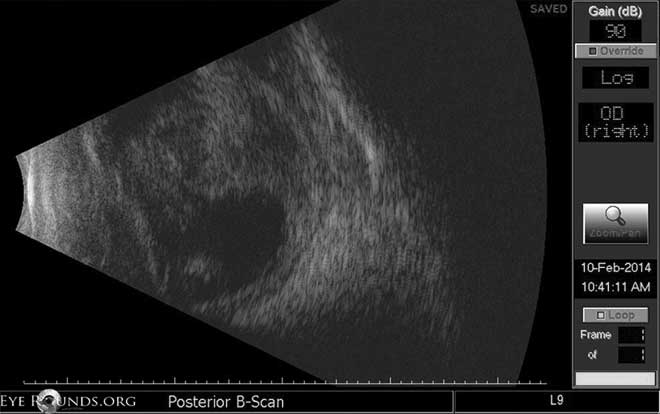

Ophthalmic Atlas Images by EyeRounds.org, The University of Iowa are licensed under a Creative Commons Attribution-NonCommercial-NoDerivs 3.0 Unported License.